Pink beaches are rare but the Philippines has about six of them. Allow Tita S to tell you 15 facts about one that is located in Mindanao.
1.Great Santa Cruz Island is a small, inhabited island in Zamboanga City1 in the Zamboanga Peninsula2 (Region3 9), in the Mindanao4 group of islands, Philippines.
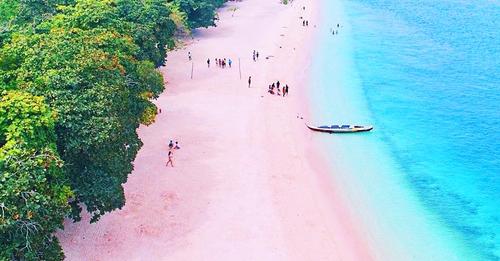
Photo source: https://www.facebook.com/tourism9zampen/posts/1419476578119015 post
It is 4 km (2.49 mi) south of downtown at the Santa Cruz Bank in the Basilan Strait. It is near Sibuguey Bay and the Sulu Sea.
2. It has a pink coralline sand beach so this beach is called Pink Beach.
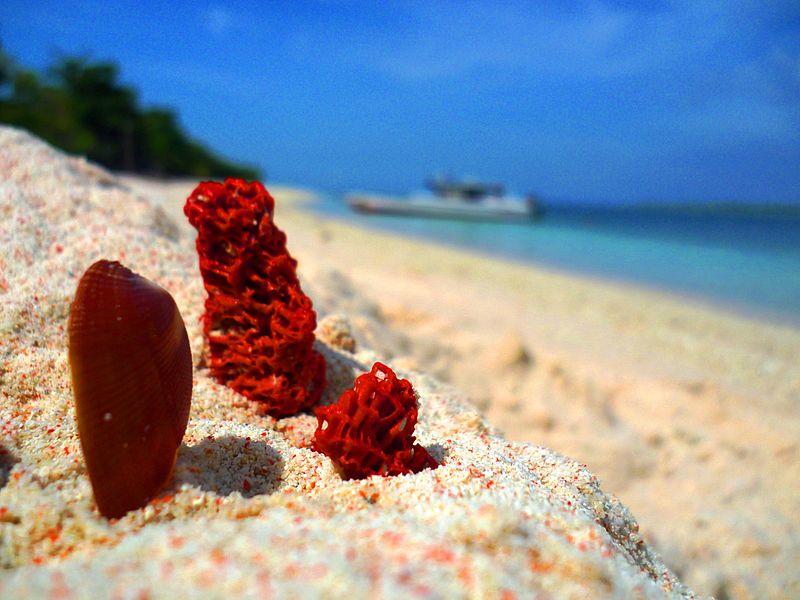
Photo source: Wowzamboangacity – MGM, CC BY 3.0, created January 8, 2011, https://en.wikipedia.org/wiki/Zamboanga_City#/media/File:Isla_Great_Santa_Cruz53.JPG
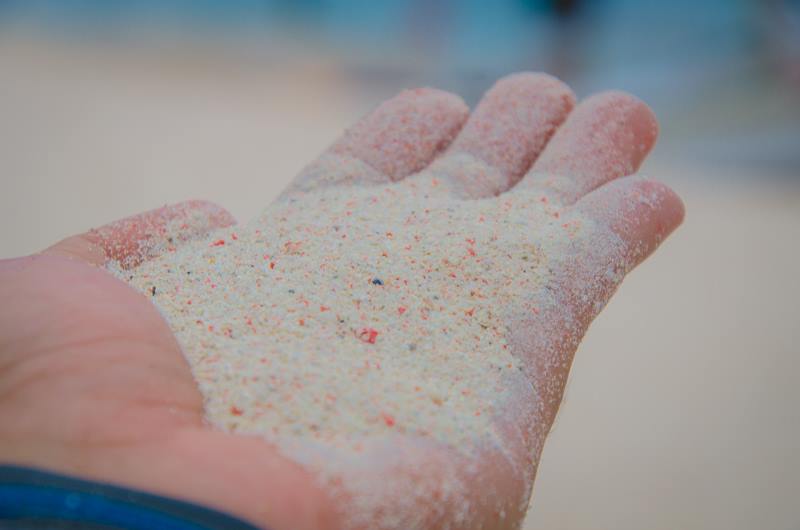
Photo source: https://www.facebook.com/WayPhilippines/photos/pcb.10154061089121911/10154061088366911
Its color comes from the pulverized red organ pipe coral5 called Tubipora musica, from eons of surf erosion, and mixed with the white sand of Great Santa Cruz Island.
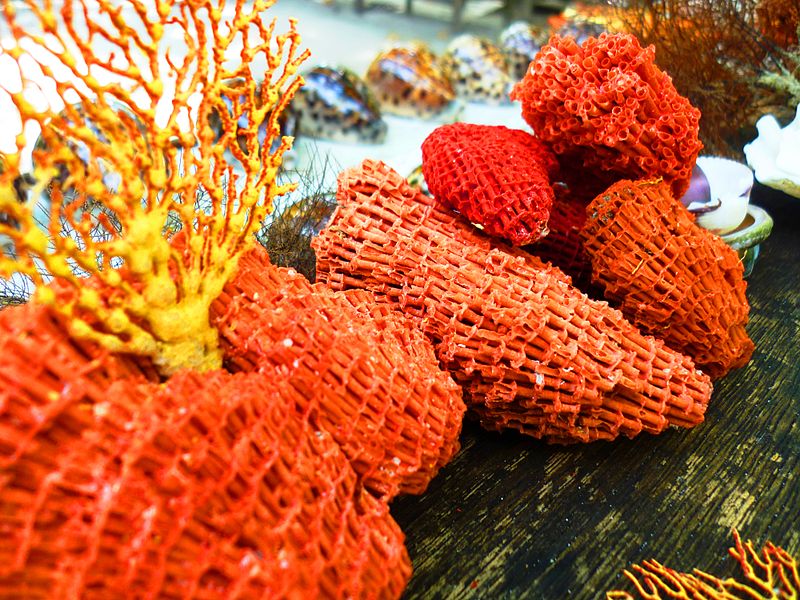
Photo source: Wowzamboangacity – MGM, CC BY 3.0, created January 8, 2011, https://en.wikipedia.org/wiki/Great_Santa_Cruz_Island#/media/File:Isla_Great_Santa_Cruz55.JPG
3. It became popular during the 1970s and early 1980s when German, Italian and Japanese tourists frequented it. There are more tourists now due to its popularity as a pink beach, especially after January 18, 2017, when National Geographic recognized it as one of the 21 Best Beaches in the World6.
4. It is 2.6 km (1.62 mi) long, 1.5 km (0.93 mi) wide, with a coastline of 6.6 km (4.1 mi).
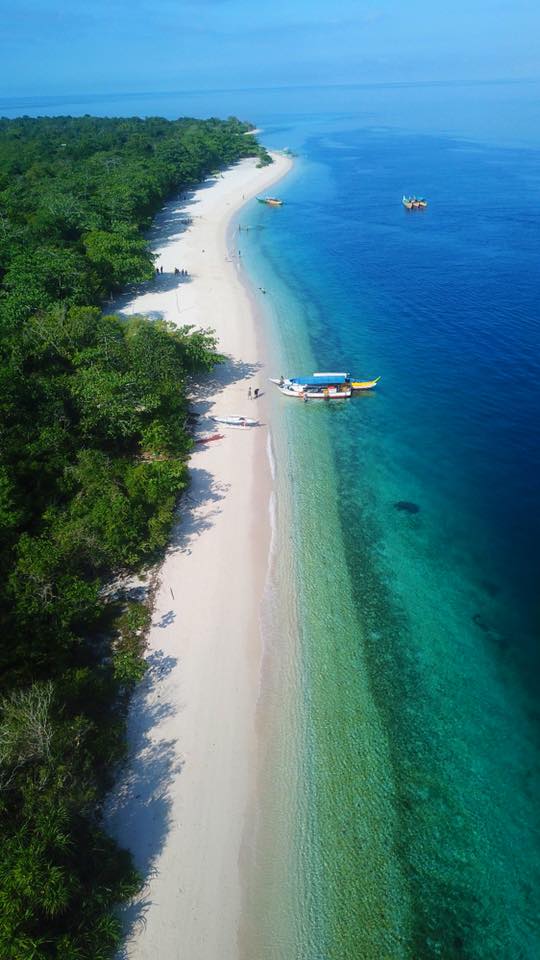
Photo source: https://www.facebook.com/photo/?fbid=2501188803479643&set=pcb.2501189673479556
5. The Great Santa Cruz Island, together with Little Santa Cruz Island7, are jointly called the Great and Little Santa Cruz Islands Protected Landscape and Seascape, with a total area of 1,877 hectares (4,640 acres).
It was declared as a protected area of Region 92 of the Philippines on April 23, 2000, through Proclamation No. 271.
6. I know what you are thinking. Is it safe to go to Pink Beach? Authorities say that you need not worry because the Philippine military and police are visible all around this pink beach and they limit the time you stay there (7AM – 2PM), with a specific and limited number of people (around 400 per day).
7. You just have to contact the Zamboanga City Tourism Office at +63927-2835684 or email tourism.zambo@gmail.com. Check on the availability of the date you intend to visit, and reserve to get priority, especially during peak (summer) season and weekends. No down payment is needed.
The tourism office can also arrange a dive during your visit, upon your request. While you are at it, why not ask the tourism office for reputable tour packages so you and your companions will not worry about hotel transfers, boat transfers, permits, fees, and even food?
8. Once you are in Zamboanga City1, proceed to the City Tourism Office in Paseo del Mar8. You can charter a boat from there for 10 passengers, at PHP1,000 (round trip), so that is PHP100 per person. If you are solo, or there are less than 10 people in your group, you can join a boat that can accommodate you, to complete a total of 10 to share the boat fare. Groups with less than 10 pax still need to pay the total amount.
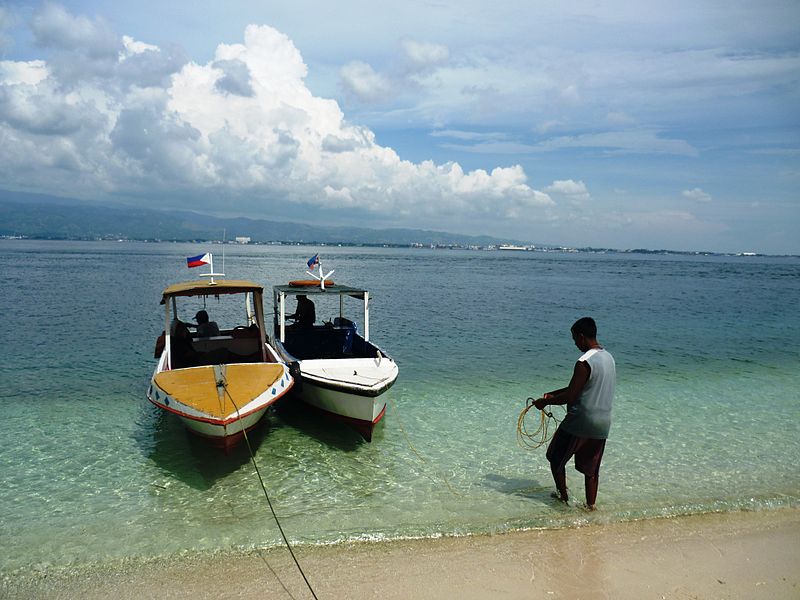
Photo source: Wowzamboangacity – MGM, CC BY 3.0, created January 8, 2011, https://en.wikipedia.org/wiki/Great_Santa_Cruz_Island#/media/File:Isla_Great_Santa_Cruz22.JPG
It is a 20-minute boat ride. You also need to pay PHP20 environmental fee and PHP5 terminal fee too.
Pls compare with this fr zam tourism fb below or just attach this pic – Photo source: https://www.facebook.com/tourism9zampen/photos/a.204840926249259/1509763139090358/ post – same lang kasi
9. Pink Beach is limited only to day trips. Better go early in the morning, and if you enlisted in advance, you will be assigned to a boat first, before all the walk-ins, so you can stay in this beach from 7AM to 2PM.
You can rent cottages (with grill stations) in the island: PHP100 (for 4-6 pax), PHP200 (for 8-12 pax), and PHP500 (a pavilion for 20-40 pax). You cannot stay overnight and camping is not allowed.
For inquiries, contact Protected Area Management Unit, Islas de Santa Cruz, Centro Latino, Paseo del Mar, Zamboanga City: 0977-7083194 (call only).
10. Water from faucets are sea water so I was told that you need to bring your own reusable water bottle, filled with drinking water.
For the budget-conscious, you can bring your own packed lunch and snacks. There are vendors who peddle crabs, dishes and other seafood, and upon your order, they can cook them for you. There is also small store that offers simple snacks and drinks. Just bring cash.
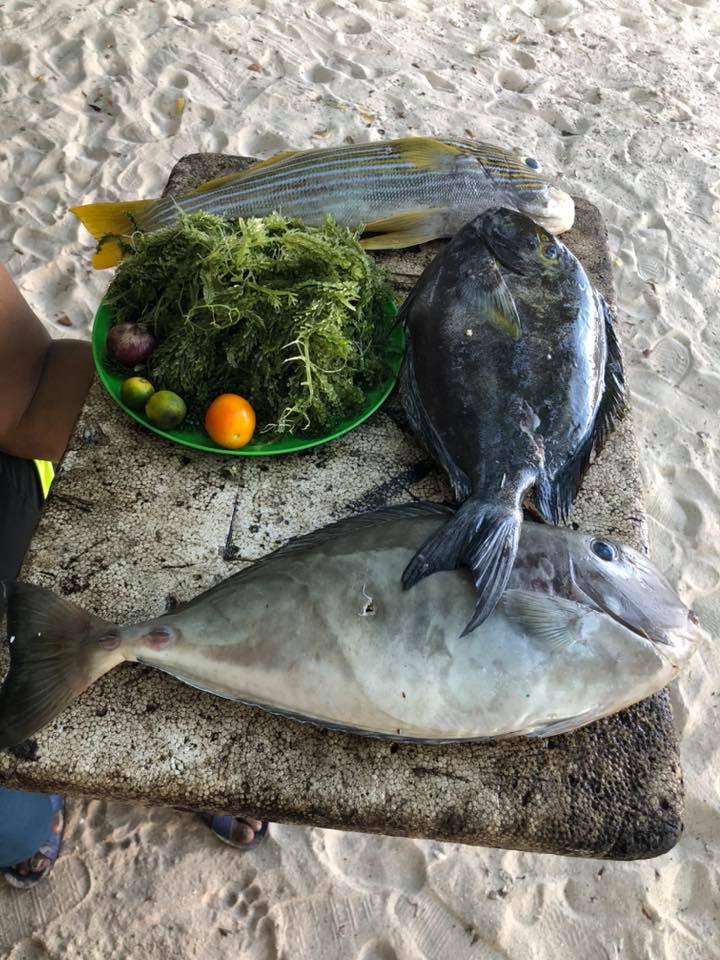
Photo source: https://www.facebook.com/photo?fbid=2501189113479612&set=pcb.2501189673479556
Bring your dry bag and pack your own goggles or snorkel gear too. Do not forget them so you can see and appreciate the bright red corals in a nearby reef from where the pink color of the beach comes from.
Also bring swimwear, aqua shoes, change of clothes, towel, personal toiletries, natural sunscreen, hand sanitizer, fully-charged cell phone and/or camera, and power banks. Bring cash if you want to buy food, beverages and souvenirs.
Remember, single use plastics are not allowed, so bring reusable water bottles and eco-bags. If you bring your own lunch/snacks, bring a garbage bag too.
Of course, you can swim in the crystal clear water, sun bathe, play beach volleyball, and take lots of photos, especially with the colorful vintas9 around. If it is low tide, you are in luck because you can go with your tour guide to the small sand bar and take more photos.
11. There are no hotels, resorts, restaurants or food stalls in the island. If you opt for a package tour, a seafood lunch is included, just ask your hotel or the tourism office for a reputable tour operator.
12. You need to attend an orientation before you board the boat. Guests are oriented on how to protect the island and maintain its natural beauty. The following island rules and regulations will be included: no smoking, no drinking of alcoholic beverages, no tree climbing, no littering, no picture taking with officials in the island, and you are not allowed to take any marine life or sand. The sand bar is not accessible without a tour guide. No trash should be left on the island. Washing utensils in the swimming area is not allowed. Violators will be penalized PHP5,000, or will be required to render community service for a certain number of hours.
There are souvenir stalls in the island so bring cash to buy pearls and other souvenirs. Expect armed policemen to guard you during your stay.
A shower area and toilets are provided in the island but seawater is used.
13. You have the option to join a mangrove tour during high tide, which is usually in the morning. Just google the itinerary for this tour. It costs around PHP200 per person.
14. The island has a lagoon where guests can see and touch stingless jellyfishes that are light brown or gray-to-violet in color. But you can only hold them if your hand is free of sunblock and they should never be totally taken out of the water. This is a unique experience so better take a video if you do this. This experience could be included in the mangrove tour, so please inquire.
15. It is sad to know that there was illegal coral reef mining in the area which destroyed most of Great Santa Cruz Island’s vast coral population. The city government of Zamboanga1 planned to improve the island for the preservation, protection, conservation and rehabilitation of the island’s ecosystem and develop the island for ecotourism, through a development plan to be completed in 3 to 5 years.
The information was obtained from https://philippineslifestyle.com/pink-sand-beaches-in-the-philippines-to-visit-this-2020/, https://www.facebook.com/tourism9zampen/posts/1509767305756608, https://lifestyle.inquirer.net/291230/zamboangas-pink-beach-one-worlds-21-best-national-geographic-says/,
https://www.thephilippines.com/2015/11/two-amazing-pink-sand-beaches-philippines.html#.WAEa2pMrK-o,
https://www.spot.ph/things-to-do/weekend-guides/73789/pink-beach-philippines-a00171-20180520-lfrm,
https://www.philippinebeaches.org/12-unusual-beaches-philippines/ and the Wikipedia page “Great Santa Cruz Island”10.
Bottomline, this island is not commercialized so it is more for nature-loving guests who prefer a simple, serene, and beautiful beach.
This is not a sponsored post. I just want my readers to know more about the Philippines.
Go see other posts about pink beaches in the Philippines: PRETTY IN PINK – 2: SILA ISLAND (San Vicente, Northern Samar, Philippines), PRETTY IN PINK – 3: SUBIC BEACH (Matnog, Sorsogon, Philippines), PRETTY IN PINK – 4: TIKLING BEACH (Matnog, Sorsogon, Philippines) and PRETTY-IN-PINK-5: PINK BEACH, PAROLA ISLAND (Jose Panganiban, Camarines Norte, PH)
Did you find this post informative? I would like to hear your comment/s regarding Pink Beach, especially if you were able to see it.
See other interesting places through other posts in this category and other categories of SCapades, Pinoy Delights, and Smart Traveler – Now You Know, Short and Simple, and Say, Say, Say. Happy reading, and I hope that you will appreciate what I shared and some of the featured destinations will be part of your future travel plans!
Remember to share this post with your friends, follow me by clicking on the bottom right corner of your device, and do not forget to like this post. Thank you.
– – – – – – – – – – – – – – – – – – – – – – – – – –
The following terms are defined for interested readers, especially those with “Senior-Moments”, those not familiar with Filipino terms, and those too busy or lazy to Google such terms:
1Zamboanga City is a first class11 highly urbanized city12 in the southwestern tip of the Zamboanga Peninsula2 region3 of the Philippines. It is the 6th most populous and 3rd largest city by land area in the Philippines, and the commercial and industrial center of the Zamboanga Peninsula region.
Although geographically separated, and an independent and chartered city, Zamboanga City is grouped with the province13 of Zamboanga del Sur14 for statistical purposes, yet governed independently from it.
It was founded on June 23, 1635, became a chartered city under Commonwealth Act No. 39 on October 12, 1936, became an independent chartered city on February 26, 1937, and a highly urbanized city on November 22, 1983. It has 98 barangays.
It is called by three nicknames: (a) The City of Flowers because the word Zamboanga comes from the Malay word jambangan which means “garden of flowers”, and the assorted tropical flowers which line its roadsides; (b) The Sardines Capital of the Philippines because 11 out of the 12 sardines companies in the country are located here and the city is now one of the most important and busiest port cities in the country; and, (c) Asia’s Latin City due to: (1) the Hispanic influences in its culture and religion, manifested by the Spanish-style buildings; (2) the dialect spoken by majority of the people there, locally called Chavacano, the only Spanish-based creole language in Asia, with 80% Spanish and 20% from Philippine languages and other foreign sources; and, (3) Our Lady of the Pillar which has been venerated for almost 4 centuries as the patroness of Zamboanga City and in the Archdiocese of Zamboanga. Her sculpture is atop the eastern gate of the 17th century Spanish military fort dedicated to the Virgin, Fort Pilar, now a Catholic Marian shrine. And guess what? She is also the patroness of Spain!
Visit its official website www.zamboanga.gov.ph for more information.
The information was obtained from the Wikipedia pages “Zamboanga City”15, and “Our Lady of Pillar”16 and the Wikivoyage page “Zamboanga (city)”17.
2Zamboanga Peninsula, or Region 9, is a designated region3 in the Philippines which consists of 3 provinces13 (Zamboanga del Norte, Zamboanga Sibugay and Zamboanga del Sur14), including 4 cities (Dapitan, Dipolog, Isabela and Pagadian), and the highly urbanized city of Zamboanga City1 as the region’s cultural, economic and educational center. It was previously called Western Mindanao. The information was obtained from the Wikipedia page “Zamboanga Peninsula”18.
3A region is an administrative division based on geographical, cultural and ethnological characteristics. Each region is further subdivided in provinces13, composed of cities and municipalities19 (or towns), which in turn, are divided into barangays20, formerly called barrios, according to Wikipedia page “Regions of the Philippines” 21.
See a related post: Foreign Seniors Ask: WHAT ARE THE REGIONS OF THE PHILIPPINES?
4Mindanao is one of the 3 major geographical divisions of the Philippines. It is the second largest island of the country and covers 6 administrative regions3: Caraga, Davao, Northern Mindanao, SOCCSKSARGEN, Zamboanga Peninsula2, and the Bangsamoro Autonomous Region in Muslim Mindanao (BARMM). It is composed of 22 provinces13 and 33 cities (27 provinces and 33 cities, if associated islands are included). The information was obtained from Wikipedia page “Mindanao.”22 Mindanao is located in the southern part of the country; the 2 other geographical divisions of the Philippines are Luzon (in the northern part) and Visayas (the middle part).
5The organ pipe coral (Tubipora musica) is the only known species of the genus Tubipora, native to the waters of the Indian Ocean and the central and western regions of the Pacific Ocean. They are restricted to (2-20 m deep) shallow waters and tend to live in sheltered areas where they eat plankton.
This species is a soft coral, but with a unique, hard, bright red skeleton of calcium carbonate that contains many organ pipe-like tubes. The colonies are interconnected networks, consisting of many pipes and tubes joined together with parallel platforms. Living colonies are typically dome-shaped and are green, blue or purple, due to the color of the expanded polyps. Each tube is a series of polyps (cylindrical with an oral end surrounded by a circlet of 8 feather-like tentacles).
The information was obtained from Wikipedia page “Organ pipe coral.”23
6For sure, you are curious what the 21 Best Beaches in the World24 recognized by National Geographic on January 18,2017 are, so here they are, in alphabetical order:
- Anse Source d’Argent, La Digue, Seychelles
- Blue Bay, Mauritius
- Bowman’s Beach, Sanibel Island, Florida, USA
- Cannon Beach, Oregon
- Carmel City Beach, Carmel-by-the-Sea, California, USA
- Cas Abao Beach, Curacao
- Cathedrals Beach, Ribadeo, Spain
- Corniche Beach, La Teste-De-Buch, France
- Lazy Beach, Koh Rong Island, Cambodia
- Lyme Regis, England
- Noordwjk Beach, The Netherlands
- One Foot Island, Aitutaki, Cooks Islands
- Papakolea Beach, Hawaii, USA
- Pelican Beach, South Water Caye, Belize
- Pink Beach, Great Santa Cruz Island, Zamboanga, Philippines
- Piscinas Beach, Arbus, Sardinia
- Playa del Amor in Marieta Islands, Mexico
- Reynisfjara Beach, Iceland
- Shell Beach, Shark Bay, Western Australia
- Sleeping Bear Point, Sleeping Bear Dunes, Michigan, USA
- Sunset Beach, Brunswick Islands, North Carolina, USA
7Little Santa Cruz Island is a smaller island near the Great Santa Cruz Island. It has white pulverized sand beach, but not pink, compared to the latter. It is restricted to the public because it is used as a military camp.
8Paseo del Mar is one of the prominent landmarks in Zamboanga, very close to Fort Pilar (now a museum). It has an 8-arch entrance, a plaza, a seaside walkway (for a beautiful sunset view), restaurants, cafés and entertainment so it is a popular destination to both local and foreign tourists. At night, it is well lit with decorative lamps, a Dancing Fountain and live entertainment. The Santa Cruz Island Ferry is nearby.25
9A vinta is the traditional outrigger boat26 from Mindanao4, made by Sama-Bajau, Tausug and Yakan peoples living in the Sulu Archipelago, Zamboanga Peninsula2, and southern Mindanao. It is characterized by its colorful rectangular lug sails27 (bukay) and bifurcated prows (forward part of the boat) and sterns (back part of the boat), which resemble the gaping mouth of a crocodile. It is used as a fishing vessel, cargo ship, or houseboat, predominantly in Zamboanga, Basilan and other parts of mainland Mindanao. The information was obtained from Wikipedia page “Vinta.”28
10“Great Santa Cruz Island,” accessed February 1, 2021, https://en.wikipedia.org/wiki/Great_Santa_Cruz_Island
11A first class city is a city in the Philippines with an average annual income of at least PHP500 million, based on the previous 4 calendar years, according to the Wikipedia page “Cities of the Philippines”.29
12A highly urbanized city (HUC) is a type of city in the Philippines with a minimum population of 200,000 as certified by the Philippine Statistics Authority (PSA), and with the latest annual income of at least 50 million pesos, according to Wikipedia page “Cities of the Philippines”.29 There are currently 33 such cities in the Philippines.
See a related post: Foreign Seniors Ask: HOW MANY CITIES ARE THERE IN THE PHILIPPINES?
13A province is the primary administrative and political division in the Philippines. It is the second-level administrative sub-division of a region3. There are 81 provinces (lalawigan) in the Philippines. Each province is governed by an elected legislature called the Sangguniang Panlalawigan and by an elected governor. The information was obtained from the Wikipedia page “Provinces of the Philippines.”30
See a related post: Foreign Seniors Ask: WHAT ARE PROVINCES IN THE PHILIPPINES?
14Zamboanga del Sur is a province13 located in the Zamboanga Peninsula2 region3 in Mindanao4, Philippines. It has 42 municipalities19 and its capital is the city of Pagadian. It borders Zamboanga del Norte to the north, Zamboanga Sibugay to the west, Misamis Occidental to the northeast, Lanao del Norte to the east, and the Moro Gulf to the south. It was founded on June 6, 1952, through Republic Act 711, from the former Zamboanga province in southwestern Mindanao.
The leading industries are in the areas of semi-processed rubber, rice and corn milling, food processing, wood and rattan furniture making, and dried fish and squid processing. New industries include concrete products, garments, wax and candle factories, lime making, and other home and cottage industries.
The information was obtained from the Wikipedia page “Zamboanga del Sur.”31
15“Zamboanga City,” accessed February 1, 2021, https://en.wikipedia.org/wiki/Zamboanga_City
16“Our Lady of the Pillar,” accessed February 1, 2021, https://en.wikipedia.org/wiki/Our_Lady_of_the_Pillar
17“Zamboanga (city),” accessed February 1, 2021, https://en.wikivoyage.org/wiki/Zamboanga_(city)
18“Zamboanga Peninsula,” accessed February 1, 2021, https://en.wikipedia.org/wiki/Zamboanga_Peninsula
19A municipality is a small, single urban administrative division, or local government unit (LGU), in the Philippines which has corporate status and powers of self-government or jurisdiction as granted by law. It is a unit under a province13, subdivided into barangays20, and is locally called bayan. In the Philippines, a municipality is headed by a mayor, a vice mayor, and members of the Sangguniang Bayan (legislative branch). It can enact local policies and laws, enforce them, and govern its jurisdictions. It can enter into contracts and other transactions through its elected and appointed officials and can tax as well. It enforces all local and national laws. There are almost 1,500 municipalities in the Philippines. The information was obtained from Wikipedia page “Municipalities of the Philippines.”32
20A barangay in the Philippines is the smallest administrative division in the Philippines, headed by a barangay captain, aided by a Sangguniang Barangay (Barangay Council). It is the native Filipino term for a village. It was formerly called a barrio. In a metropolitan area, a barangay is an inner city neighborhood, a suburb, or a suburban neighborhood. The word barangay originated from the term balangay, a kind of boat used by a group of Austronesian people who migrated to the Philippines. A number of barangays grouped together is called a district. The information was obtained from Wikipedia page “Barangay.”33
21“Regions of the Philippines,” accessed July 17, 2018, https://en.wikipedia.org/wiki/Regions_of_the_Philippines
22“Mindanao,” accessed April 2, 2018, https://en.wikipedia.org/wiki/Mindanao
23“Organ pipe coral,” accessed February 1, 2021, https://en.wikipedia.org/wiki/Organ_pipe_coral
25https://www.halaltrip.com/attraction-details/1395/paseo-del-mar/
26An outrigger boat is a kind of watercraft which features one or more lateral support floats known as outriggers, which are fastened to one, or both, sides of the main hull (body of the craft). It can be a small dugout canoe, double-outrigger vessel, or a large plank-built vessel. It is traditionally fitted with Austronesian sails, like the crab claw sails and tanja sails27, but in modern times are often fitted with petrol engines. It is the first true ocean-going ship, and an important part of the Austronesian heritage. The information was obtained from Wikipedia page “Outrigger boat.”34
27A rectangular lug sail, tanja sail, tanja rig, tilted square sail, canted rectangular sail, or balance lug sail, is a type of sail commonly used by the Malay people and other Austronesians, particularly in Maritime Southeast Asia (Brunei, East Timor, Indonesia, Malaysia, the Philippines and Singapore).
It developed from the fixed version of the older Austronesian triangular crab-claw sail, and is functionally identical, with the only difference being that the upper and bottom spars (the pole which supports the tanja sail) do not converge into a point in the leading edge.
The information was obtained from Wikipedia page “Tanja sail.”35
28“Vinta,” accessed February 1, 2021, https://en.wikipedia.org/wiki/Vinta
29“Cities of the Philippines,” accessed February 1, 2021, https://en.wikipedia.org/wiki/Cities_of_the_Philippines
30“Provinces of the Philippines,” accessed May 29, 2019, https://en.wikipedia.org/wiki/Provinces_of_the-Philippines
31“Zamboanga del Sur,” accessed February 1, 2021, https://en.wikipedia.org/wiki/Zamboanga_del_Sur
32“Municipalities of the Philippines,” accessed January 29, 2019, https://en.wikipedia.org/wiki/Municipalities_of_the_Philippines
33“Barangay,” accessed December 30, 2018, https://en.m.wikipedia.org/wiki/Barangay
34“Outrigger boat,” accessed February 1, 2021, https://en.wikipedia.org/wiki/Outrigger_boat
35“Tanja sail,” accessed February 1, 2021, https://en.wikipedia.org/wiki/Tanja_sail

